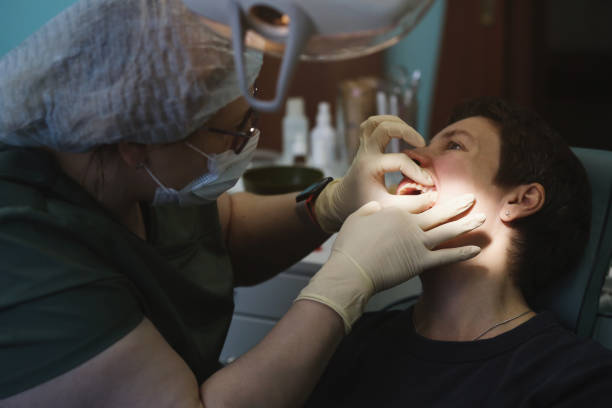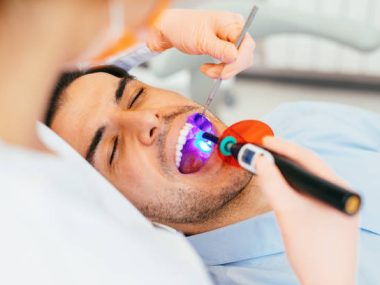How much does a dental bridge cost without insurance? When faced with the need for dental restoration, one common solution that bridges the gap between missing teeth is a dental bridge.
Dental bridges offer both functional and aesthetic benefits, restoring the ability to chew, speak, and smile with confidence.
However, the question of cost often arises, especially for those without dental insurance coverage.
Understanding the factors that contribute to the expense of a dental bridge can help individuals make informed decisions about their oral health and budget.
In this article, we delve into the various aspects that influence the cost of dental bridges when insurance is not a factor.
From materials and techniques to location-based variations, exploring these elements will empower you to approach dental bridge restoration with clarity and financial preparedness.
Also Read:
How Much Is a Dental Cleaning without Insurance?
How Much Is a Filling without Insurance?
How Much Does a Dental Bridge Cost without Insurance?
The cost of a dental bridge without insurance can vary significantly based on several factors.
On average, a basic dental bridge to replace a single missing tooth might range from $500 to $1,200 or more per artificial tooth.
However, this estimated cost can increase due to multiple considerations.
The type of bridge, such as traditional or cantilever, and the materials used, like porcelain, metal, or zirconia, significantly impact the final price.
Additionally, the expertise of the dentist and the region’s cost of living contribute to variations.
Preliminary procedures like tooth extraction or dental implants to support the bridge can add to the overall expense.
Lab fees for custom fabrication of the bridge and the number of teeth being replaced also influence costs.
It’s important to note that ongoing maintenance and potential repairs should be factored in as well.
While dental insurance can alleviate some financial burden, those without coverage should explore alternatives like dental discount plans or financing options provided by dental offices.
Consulting a dentist for a personalized assessment is crucial to understanding the specific costs associated with a dental bridge tailored to individual needs and circumstances.
Factors Influencing Dental Bridge Costs
The cost of a dental bridge is influenced by various key factors, which can significantly vary the final price.
Firstly, the type of bridge chosen plays a crucial role.
Traditional bridges are generally more affordable compared to cantilever or Maryland bridges due to their complexity.
The choice of materials is another determinant; bridges can be made from porcelain fused to metal, all-porcelain, or zirconia, each with different cost levels.
The number of teeth being replaced directly impacts costs. A bridge replacing a single tooth is less expensive than one replacing multiple teeth.
Prior procedures like extractions or implant placements to prepare the mouth for the bridge also contribute to the overall expense.
Dentist expertise and geographical location matter as well; practices in metropolitan areas or regions with a higher cost of living tend to charge more.
Additional expenses, such as diagnostic tests, consultations, and follow-up appointments, should also be considered.
Lastly, ongoing maintenance, potential repairs, and associated dental hygiene products contribute to the long-term cost.
While dental insurance can mitigate some of these expenses, understanding these influencing factors allows individuals to make informed decisions about their dental bridge investment and budget accordingly.
Consulting with a dentist for personalized cost estimates considering these factors is essential to accurately gauge the financial commitment of a dental bridge.
Affordable Alternatives and Financing Options
For individuals seeking affordable alternatives to cover dental bridge costs without insurance, several options can be explored.
Dental schools often provide reduced-cost services performed by supervised students, offering a budget-friendly solution.
Additionally, some nonprofit organizations and community health centers may offer dental services at reduced rates or on a sliding scale based on income.
Discount dental plans are another avenue worth considering.
These plans, distinct from insurance, offer members discounts on various dental procedures, including bridges, when they visit participating dentists.
Researching and comparing different plans can lead to substantial savings.
Financing options provided by dental offices can help distribute the cost of a dental bridge over manageable monthly payments.
Many practices collaborate with third-party financing companies that offer flexible payment plans with low or even zero interest rates for qualified individuals.
Lastly, Health Savings Accounts (HSAs) and Flexible Spending Accounts (FSAs) can be used to cover dental expenses, including bridges, using pre-tax dollars.
Exploring these avenues empowers individuals without insurance to find accessible and suitable ways to finance their dental bridge, ensuring oral health and quality of life are maintained without undue financial strain.
Also Read:
How Much Is Invisalign without Insurance?
How Much Do Veneers Cost with Insurance?
Conclusion
When it comes to dental care, understanding the costs associated with a dental bridge in the absence of insurance is crucial.
While the price can vary due to factors like bridge type, materials, and location, individuals can navigate this financial decision by exploring alternative options such as dental schools, nonprofit organizations, and discount plans.
Financing choices offered by dental offices, along with utilizing tax-advantaged accounts, provide additional avenues for managing expenses.
Making an informed decision involves considering not only initial costs but also long-term maintenance and repairs.
By researching, consulting with professionals, and evaluating personal needs, individuals can confidently approach the prospect of a dental bridge, ensuring both oral health and financial well-being.






